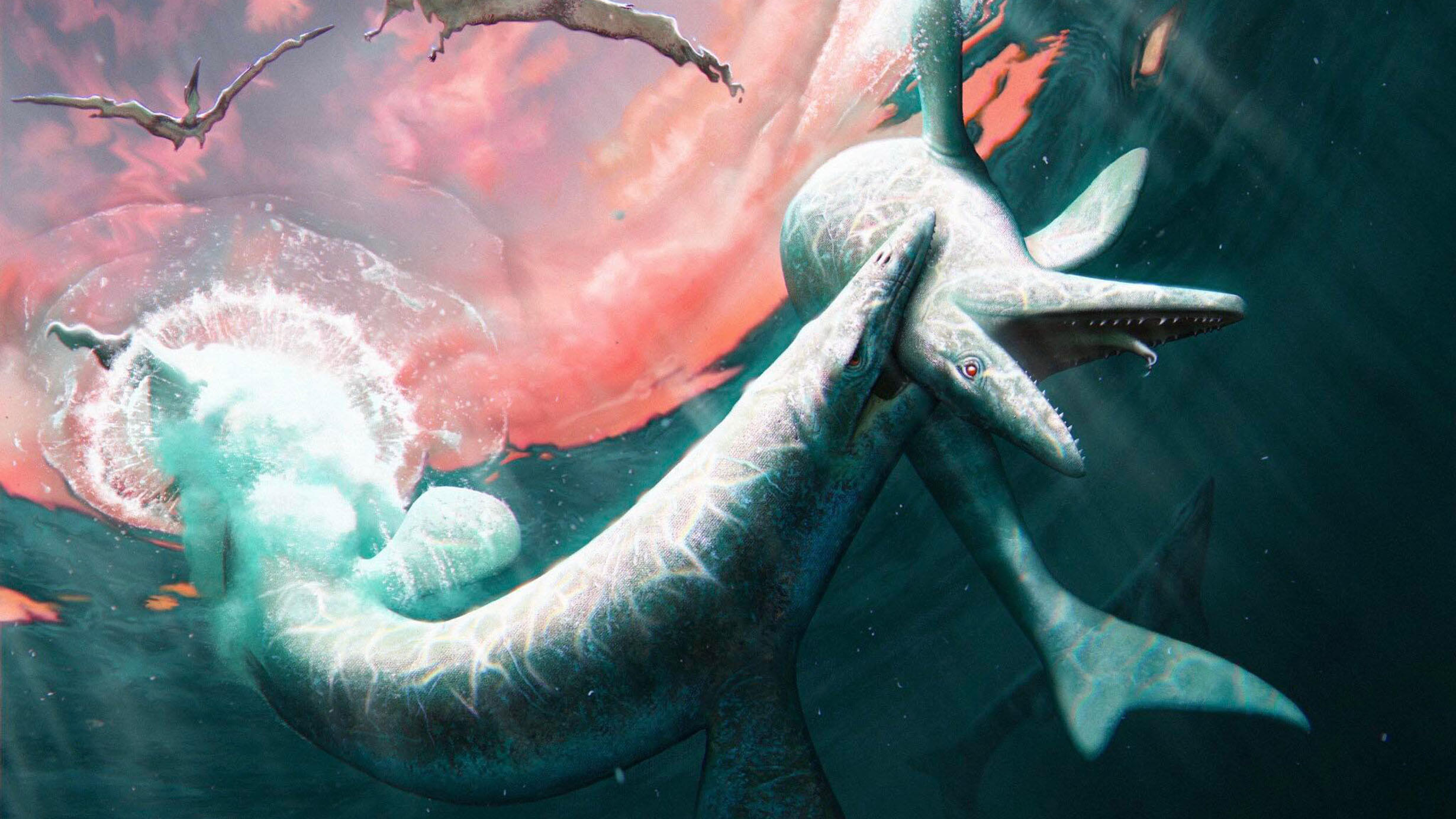 A reconstruction of two Jormungandr walhallaensis mosasaurs fighting.
A reconstruction of two Jormungandr walhallaensis mosasaurs fighting. A new species of mosasaur—large, carnivorous aquatic lizards that lived during the late Cretaceous—has transitional traits that place it between two well-known mosasaurs, bringing researchers closer to understanding how different groups of mosasaurs are related to each other.
The new species, Jormungandr walhallaensis, is named after Jǫrmungandr, a sea serpent in Norse mythology, and the small North Dakota city, Walhalla, near to where the fossil was found in 2015. Details of the discovery and new species are published today in the Bulletin of the American Museum of Natural History.
“If you put flippers on a Komodo dragon and made it really big, that’s basically what it would have looked like,” said the study’s lead author Amelia Zietlow, a Ph.D. student in comparative biology at the American Museum of Natural History’s Richard Gilder Graduate School.
Watch Amelia Zietlow scan mosasaur fossils on view in the Hall of Vertebrate Origins and find out more about these ancient lizards.
The fossil on which the study is based is an impressive specimen: a nearly complete skull, jaws, and cervical spine, as well as a number of vertebrae. After extensive analysis and surface scanning of the fossil material, Zietlow and colleagues found that this animal is a new species with a mosaic of features seen in two iconic mosasaurs: Clidastes, a smaller and more primitive form of mosasaur, and Mosasaurus, a larger form that grew to be nearly 50 feet long and lived alongside Tyrannosaurus rex.
Jormungandr walhallaensis is estimated to be about 24 feet long and, the new study suggests, would have lived about 80 million years ago, predating Mosasaurus. In addition to flippers and a stumpy, shark-like tail, Jormungandr had a bony ridge on its skull that would have given it the appearance of having “angry eyebrows.”
Mosausaurs lived between 100 and 66 million years, becoming extinct at the same time as non-avian dinosaurs in the aftermath of the asteroid strike. Many questions about this marine reptile group remain, including how many times they evolved flippers and became fully aquatic and whether they are more closely related to monitor lizards or snakes.
“As these animals evolved into these giant sea monsters, they were constantly making changes,” Zietlow said. “This work gets us one step closer to understanding how all these different forms are related to one another.”
Clint Boyd, from the North Dakota Geological Survey and Nathan Van Vranken from Eastern West Virginia Community and Technical College were co-authors on the study.